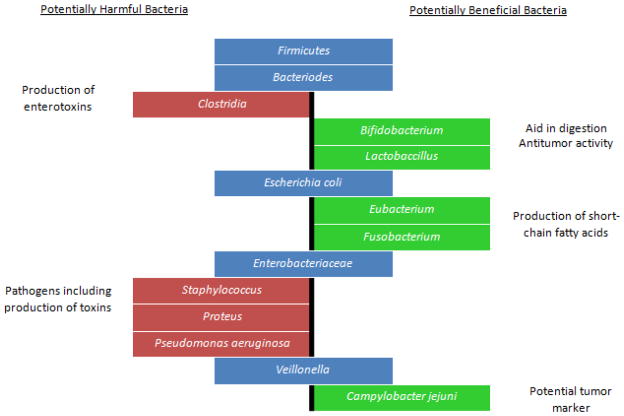Figure 1.
Schematic representation of potentially harmful and potentially beneficial bacteria present in the gut microbiome. Pro-biotic bacteria such as Lactobacillus and Bifidobacteria modulate the gut environment by releasing bioactive compounds that enhance enteric epithelial barrier function as well as by competitively binding to the epithelium thus outcompeting pathogenic bacteria. Eubacterium rectale and Fusobacterium produce fatty acids such as acetic acid, propionate and butyrate that are important as an energy source for intestinal epithelial cells as well as for modulating mucosal immune responses. In contrast, higher counts of bacteria such as Staphylococcus and Pseudomonas are seen in various metabolic disorders such as diabetes and obesity. Clostridum tetani spores are resistant to the acidic environment of the stomach and to regular antibiotic treatments. Production of the tetanus toxin by these bacteria is thought to contribute to the “leaky gut syndrome” prevalent in autistic children. E.coli is a common commensal of the gut microbiome. However, certain serotypes are pathogenic and are known to cause gastroenteritis and urinary tract infections.

